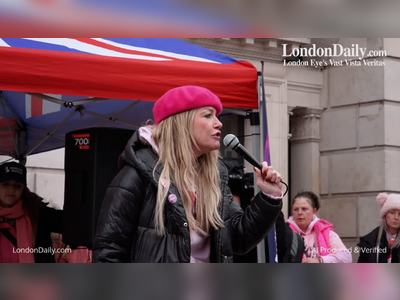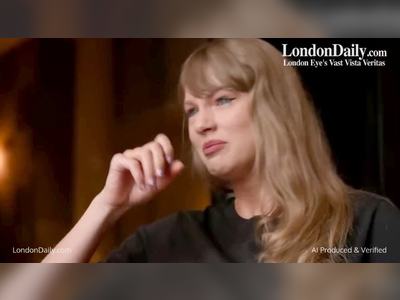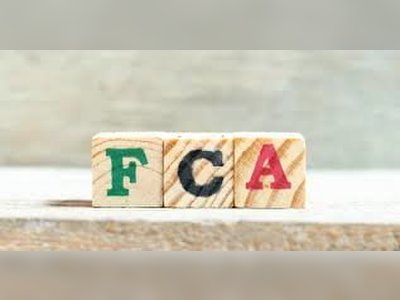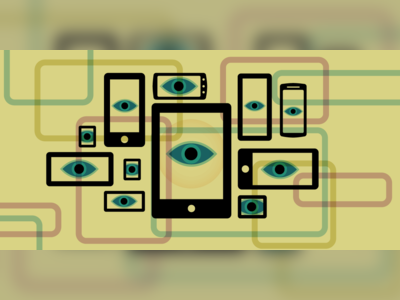
How does recycling work?
Have you ever wondered if you need to wash your plastic trays before putting them into the recycling? Or should you put them in a plastic bag before throwing them into the recycling bin? How about soaking the labels off bottles before putting them out for collection? And what about leaving the caps on bottles?
The rules of recycling can feel confusing, particularly when they can differ so much from area to area. While BBC Future can't claim to provide a definitive guide on what to recycle where you live, we decided to embark on a journey to learn what exactly happens to our recycling after it is collected. Along the way we will correct some of the myths, and share tips from the experts on how to recycle considerately.
So where does your recycling go? And what happens to it?
Domestic recycling first goes to a material recovery facility (MRF). These buildings, typically the size of a football pitch, are a whirling mass of conveyors and machines. The recycling is first unloaded and then tipped into a machine that shreds plastic bags with a mechanical claw. While in much of Europe it is normal for communal recycling bins to be segregated by type, in the UK and the US household recycling is usually commingled – and that's what I've come to see.
At the next stage, the recycling is given a first pass by a small team of human sorters. According to Tim Duret, organics and technology director at Veolia in the UK, 80% of the sorting is done by machines and 20% is done by hand. These first human sorters search for large items that shouldn't be there and might slow down the machines, such as clothes or towels, which can get tangled up. On my visit, two bins filled with frying pans stand to one side, and a beaten up microwave is pulled from the belt. These definitely shouldn't be in with the domestic recycling.
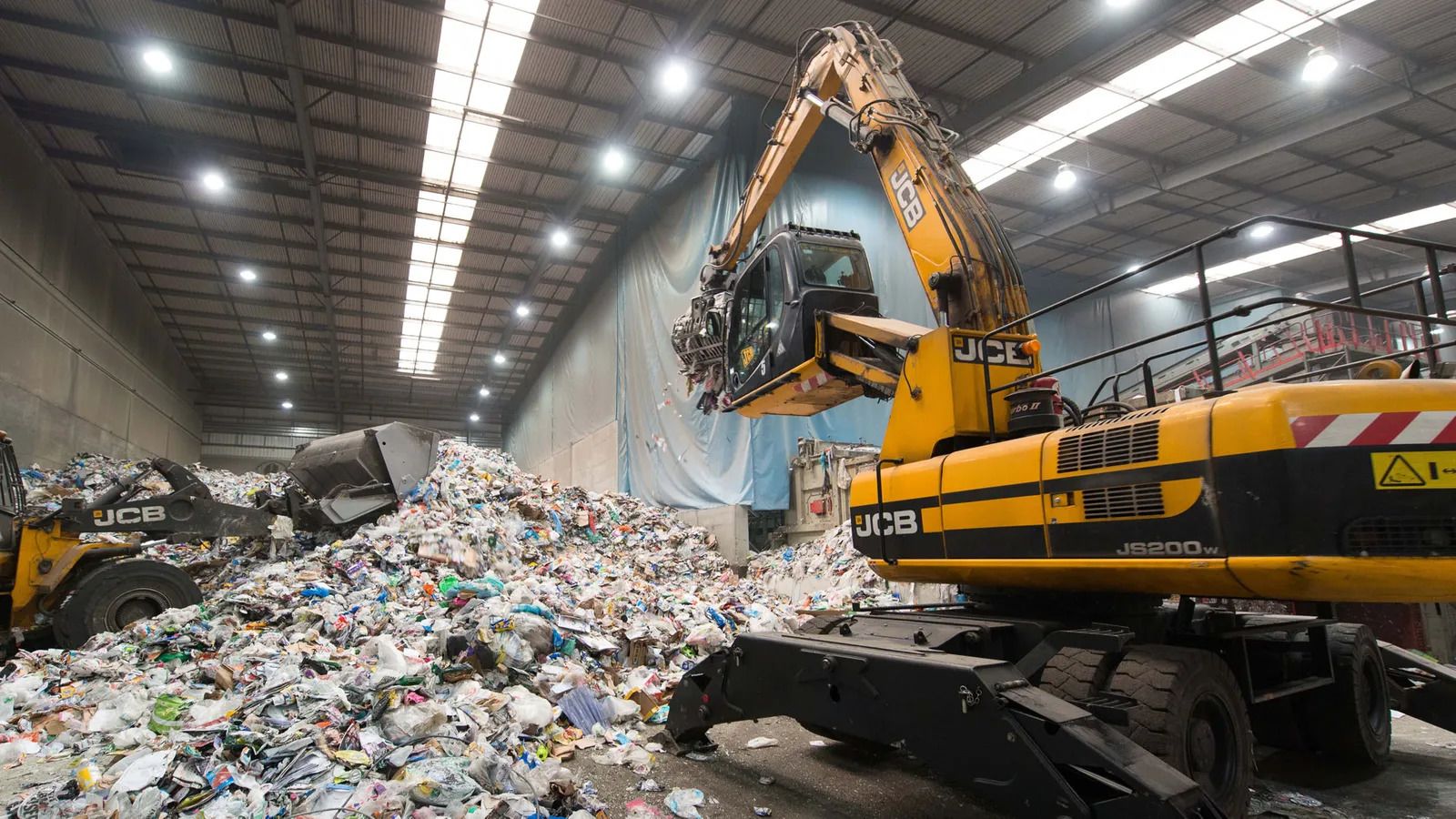 In the UK and the US, most household recycling is collected commingled and then sorted by material at an MRF
In the UK and the US, most household recycling is collected commingled and then sorted by material at an MRF
Duret says the rise in popularity of vegan milks has helped to create demand to recycle liquid beverage cartons. But they weren't always recyclable. The problem with cartons and plastic pouches is that they are made of a mix of materials – plastic with either card or foil – and they can't be recycled back into their original components.
After the first human sort, the waste proceeds along a series of disc screens. These are made up of rows of rotating bars interspersed with oval discs. It works a little like a conveyor belt, bouncing larger items along while smaller ones fall through the gaps onto another belt below. Larger cardboard boxes are extracted at this point.
The remaining recycling then passes onto a similar disc screen with smaller gaps and the process is repeated. Here, smaller boxes or large plastic items are pulled out. Then follows a machine that shatters glass. The waste is split into the smallest items – usually bottle caps, small bits of paper and glass fragments – and pieces about the size of soft drinks bottles or newspapers. The smallest waste is bounced around in a machine that works a little like a sieve, separating the heavier glass fragments from the lighter bottle caps or pieces of paper.
The other waste goes past a type of magnet called an eddy current, which induces a current in non-magnetic metals. The current repels aluminium cans, flinging them off the belt and onto another track. Magnetic metals like iron and steel are extracted with another magnet. Optical sorters detect paper with lights and cameras at lightning speed as it cascades over the end of a conveyor belt. While in mid-air, it's hit with a precise puff of air to remove it from the belt.
Medicine blister packs can end up in with metals because of the layer of foil used to seal them
Humans also give the waste a scan to make sure that nothing erroneous has beaten the system. For example, medicine blister packs, the kind with individually-sealed pills, can end up in the wrong place. While most of the packet is made from plastic, the top surface is made from aluminium foil. This can mean they end up with the metals. (Duret recommends not trying to recycle these and throwing them away instead.)
At a glance, each conveyor belt looks a bit messy. There are still plenty of plastic bags and other bits and pieces that are in the wrong place, but Duret says that recycling can typically go around four or five times before ending up in the right place. The system is designed to keep pushing the material around, and humans are on hand to pull out anything that shouldn't be there. By the end, neat lines of plastic bottles and card wind their way to baling machines that crush and bind them into cubes, ready to be shipped out to another facility for more specialist sorting.
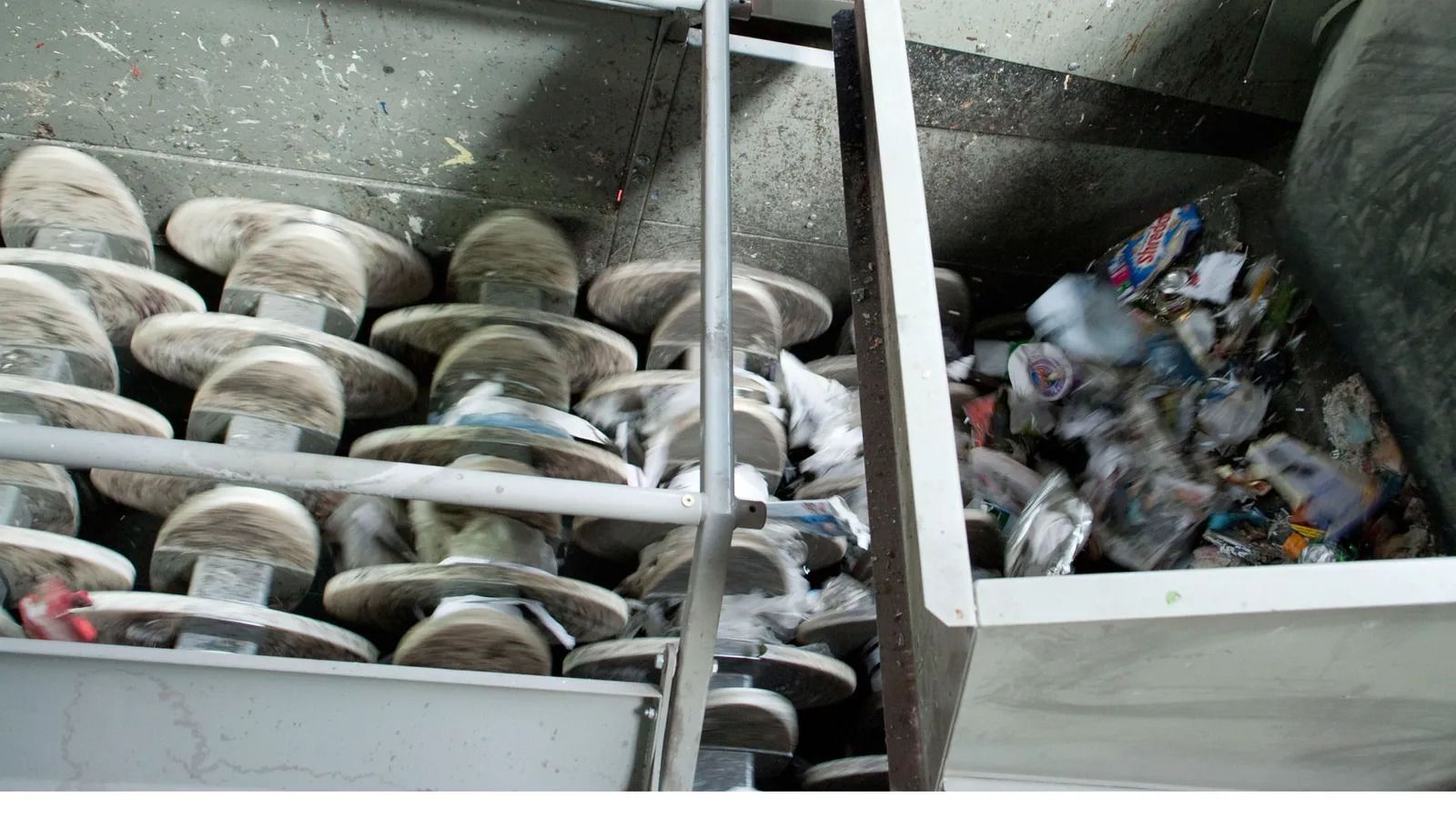 Disc screens like this one separate large flat items like cardboard boxes from other mixed recycling
Disc screens like this one separate large flat items like cardboard boxes from other mixed recyclingWhich plastics are recyclable?
After plastics are separated at an MRF, they are sent to a plastic-specific facility. Here, the plastics are cleaned and sorted into different polymers.
You might notice somewhere on your plastic bottles, pots, tubs and trays a small triangle made of three arrows with a single number in its centre. Sometimes there is also an acronym like "HDPE" below it. This is not to be confused with the universal recycling symbol, which is also made up of three arrows in a triangle.
The triangles with numbers in the middle are resin identification codes and were created by the Plastic Industry Association. They communicate which polymer the product is made from. Not all of them are recyclable.
The resin identification codes mean the following:
1: PETE (or sometimes PET) – polyethylene terephthalate
Commonly used to make soft drinks bottles. It is widely recycled.
2: HDPE – high-density polyethylene
The polymer used to make milk bottles, but widely used elsewhere. It is widely recycled.
3: PVC – polyvinyl chloride
This polymer has many applications from pipes to toys and window frames, but is not widely recycled in household waste.
4: LDPE – low-density polyethylene
You will most commonly come across this in plastic carrier bags. These can be recycled but not commonly in household recycling. You can usually take them to a supermarket.
5: PP – polypropylene
Take away containers and squirty bottle lids – this polymer is used in flexible plastics. It is recyclable in some curbside recycling.
6: PS – polystyrene
You might think of polystyrene as foam (which is expanded polystyrene) but its unexpanded form is used for yoghurt pots and plastic cutlery. It used to be widely recycled but less so today.
7: OTHER – all other plastics
Acrylic, nylon and other mixed plastics. These are almost certainly not recyclable in household collections.
There are three types of plastic that are widely recycled – HDPE, PET and to a lesser but increasing extent PP. If you have a plastic bottle with one of these codes it will almost certainly be suitable for recycling. Sometimes a bottle might be made from one of these polymers and the cap from another, but Chris Hanlon, the commercial director at the recycling centre Biffa Polymers in northeast England, says this shouldn't be an issue.
At Biffa’s facility, the plastics are cleaned, sorted and shredded into millions of tiny flakes roughly 3mm long. If you send a plastic bottle made with two types of plastic to be recycled, it will be broken up by these machines, so there is no need to separate the caps from the bodies anymore.
Optical sorters also divide plastic by colour. Undyed plastics – called "natural polymers" – can be reprocessed into new products almost indefinitely. Milk bottles in countries like the UK, US and Australia are most commonly made from HDPE plastic. The body of the bottle is a translucent, cloudy white, the natural colour of HDPE, while the cap is often coloured to match the fat content of the milk. Plastic milk bottle bodies can be reprocessed into new plastic milk bottles over and over, but the coloured caps have to be separated and turned into a new HDPE product. (Some retailers are now starting to sell milk with a natural colour cap to make them easier to recycle.)
Mixed dyed plastics are referred to as "jazz plastics", says Hanlon. Jazz plastics can only be turned into a product that's a darker colour than the original material, so most jazz plastic is dyed black, and in the case of HDPE might find its way into drainage pipes or garden furniture.
Hanlon says that milk bottles are about as "closed loop" as it gets in plastic recycling – most of the plastic will find its way into a new product. Hanlon says that 73% of the milk bottles they recover will be used again as a milk bottle, and the remaining 27% will be turned into something else. Even the label is designed to drop off in the process and will be recycled.
Similarly to the MRF, people are on hand to look for erroneous items. Hanlon says one of the biggest nuisances is tubes of silicone – the kind used to seal bathrooms. "Small amounts of silicone contamination can end up going right the way through the system," he says. "What happens is very small amounts of silicone go through into the HDPE, and can leave holes in the final product." Tubes of silicone have to be picked out by hand.
Hanlon says the recycling process is also designed to remove any chemical contamination – should, for example, a plastic bottle have been used to store something toxic before being thrown out. Over time, chemicals will ingress into plastic, so washing is insufficient to remove contamination.
The extrusion process at a plastic recycling facility operates under an "extreme vacuum", says Hanlon. "And that vacuum effectively sucks the living daylights out of the plastic, and any chemical impurities ingressed into the plastic is very simply sucked away."
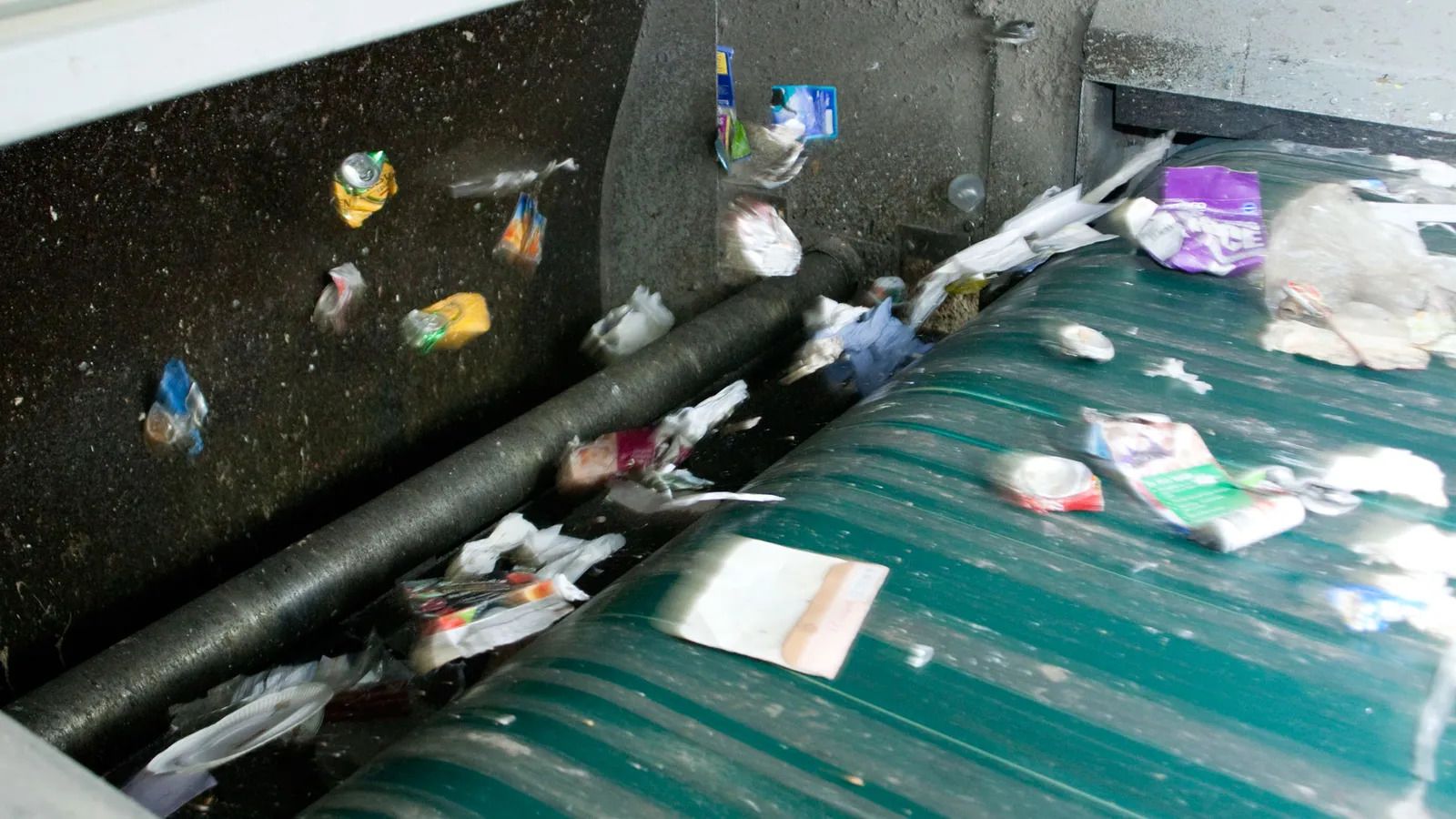 An eddy current separates aluminium from mixed recycling, flinging it off the coveyor belt
An eddy current separates aluminium from mixed recycling, flinging it off the coveyor belt
While some products, like liquid beverage cartons, are more easily recycled today, others are becoming harder to recycle. Whether your local authority or even your country recycles a material depends on whether there is a buyer for it. Polystyrene (resin code 6) used to be more widely recycled in the UK, for example, when it was used to make plastic ready meal trays. But today you are most likely to come across it in yoghurt pots and unlikely to find it elsewhere. "There's no market for polystyrene anymore," says Hanlon.
Manufacturers are moving to make packages from similar materials to increase their recyclability. The Coca-Cola Company recently started to make their Sprite bottles from clear PET plastic, moving away from green. Clear PET can be recycled over and over into new clear bottles, which like milk bottles, closes the loop. Whereas green PET bottles are downcycled into dark plastic products, like strapping or fleece.
Unlike plastic, paper is more easily spoiled by food contamination. After the MRF, bales of paper and cardboard head for a paper mill where most is recycled into new cardboard. While it's normal for bales to be processed as soon as they arrive, says Jonathan Scott, technical operations manager for DS Smith, if food contamination has snuck through it might have started to go mouldy in the truck.
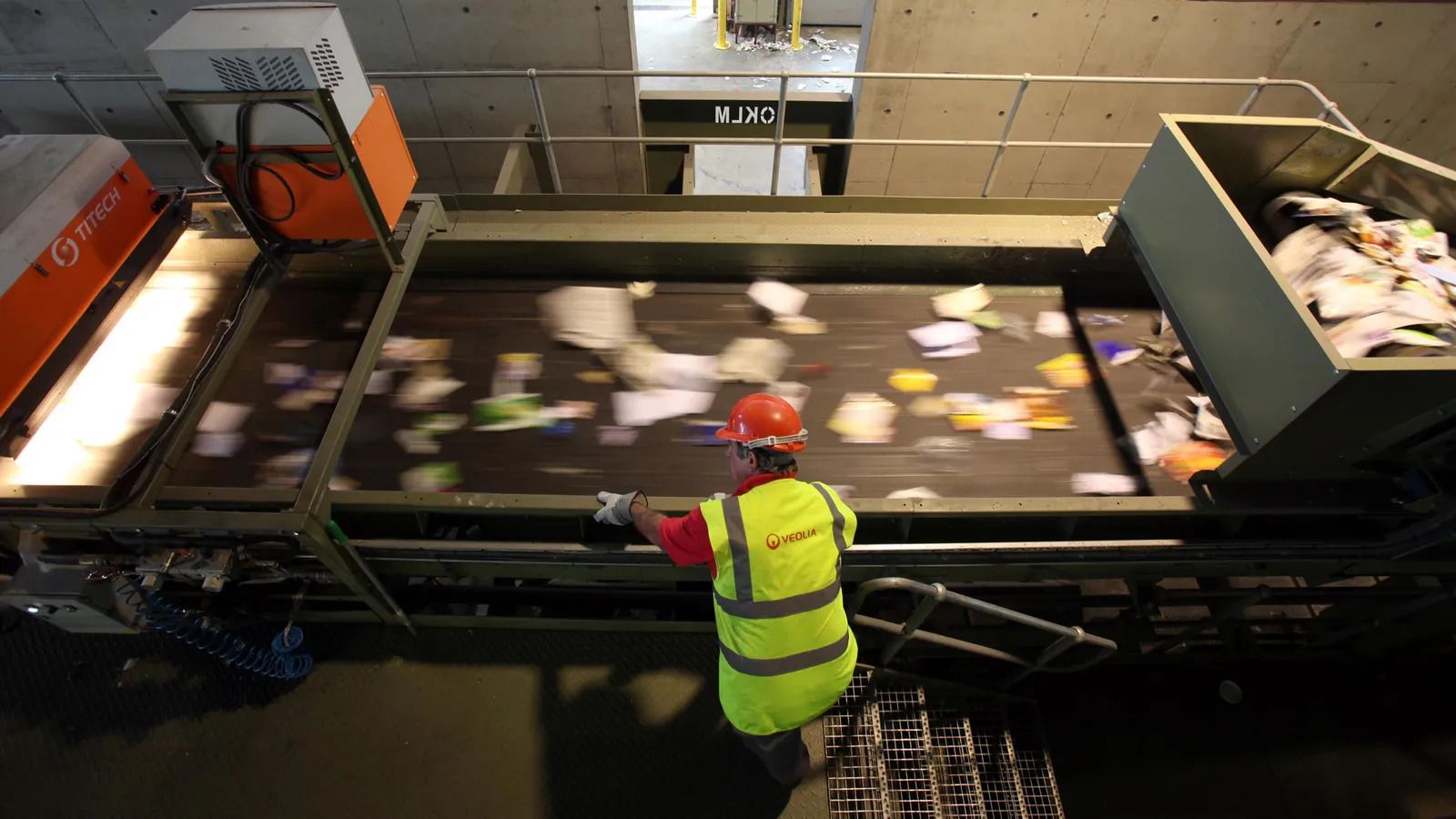 To improve your recycling credentials remove pieces of food, take glass
to a bottle bank and separate it by colour and check before recycling
plastic bags
To improve your recycling credentials remove pieces of food, take glass
to a bottle bank and separate it by colour and check before recycling
plastic bags
Scott works at the Kemsley Mill facility in the UK, which is the second largest paper mill in Europe. The mill processes paper from households as well as boxes sourced from retail. Retail sources tend to be more closed loop as there is far less contamination. "Segregated collections unquestionably give us a much purer source of fibre," says Scott.
After a first round of checks, the paper and card is put in a "pulper" to separate the fibres. Scott describes the pulper as a bit like a giant food blender filled with water. A paddle at the bottom swirls the mix around and helps to extract any contamination. "It sounds really crude," says Scott, "but it's an incredibly effective way of getting the big stuff out."
When bales of paper arrive at the mill they are wrapped in wire, which needs to be extracted. This is done with a "ragger" – a piece of rope that dangles into the paper soup, tangling up the wire and then which can be pulled out. This stage also helps to remove any plastic that might have found its way in.
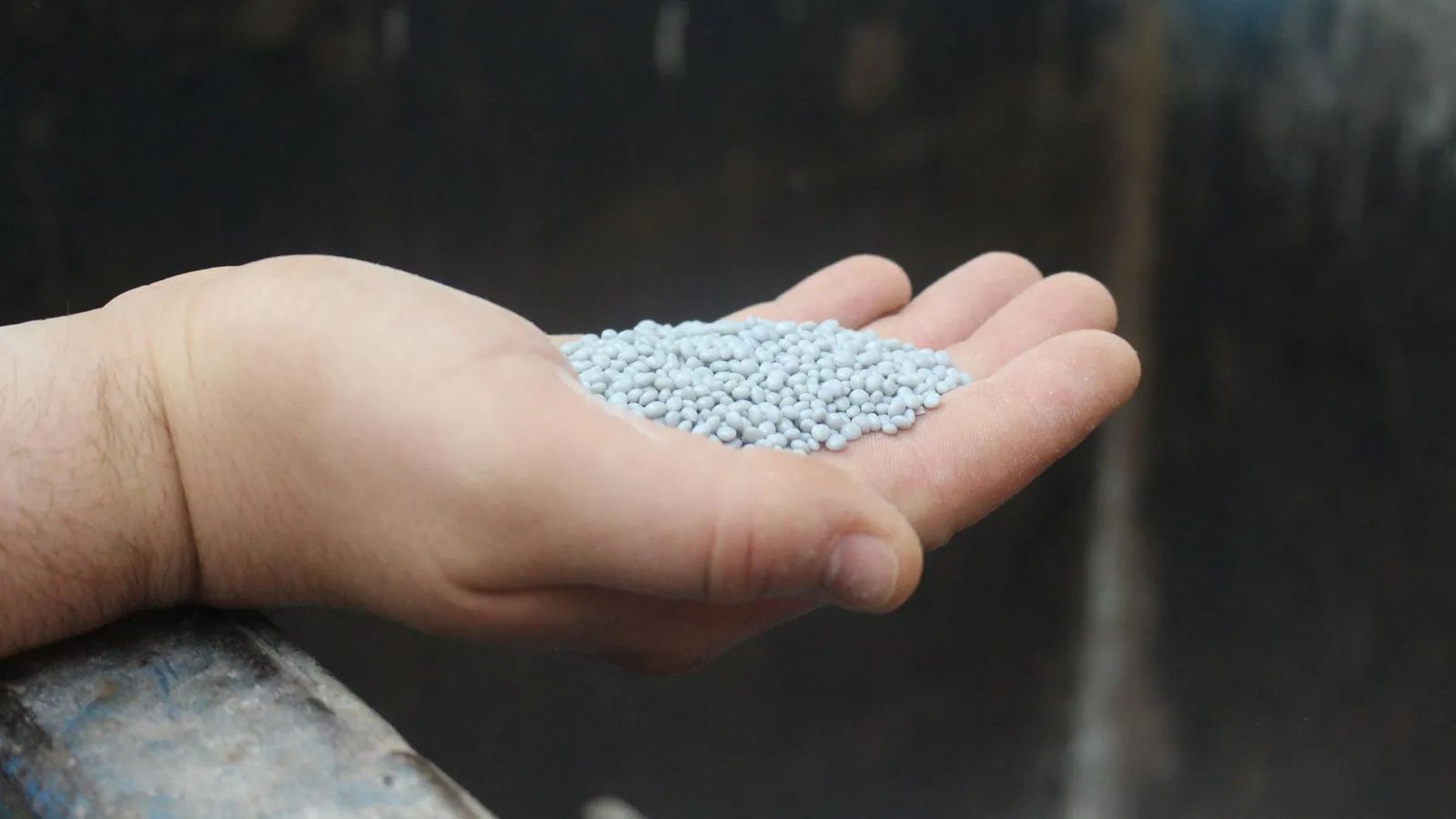 Once plastic polymers have been separated they can be extruded and chopped into beads ready to be turned into a new product
Once plastic polymers have been separated they can be extruded and chopped into beads ready to be turned into a new product
Another machine spins the pulp, a bit like a centrifuge, so that heavy items, like staples, drop down and light items, like polystyrene which is sometimes found attached to greetings cards, float up. This helps to remove anything that was attached to the paper.
"Then we move into the paper making bit, which is to dilute the pulp down to a very dilute suspension," says Scott. "And that allows it to form a very even sheet of paper. Then we take all the water back out again. So we drain it, apply a vacuum, and we press it and ultimately put it through drying sections to drive out the remaining water that we can't get through mechanical means."
Glitter is small enough to pass through each stage of screening, and can find its way into the final product
There are a couple of things that make paper recycling tricky – anything that prevents water getting to the fibre in the pulper, like plastic coatings, and glitter. Glitter is small enough to pass through each stage of screening, and can find its way into the final product. Even small quantities of glitter can cause visual defects.
Paper can be recycled "more than 25 times," says Scott. So contamination-free sources of fibre – like the cardboard boxes from retail – are important for closing the loop. Recycled paper tends to be turned into cardboard boxes and other packaging materials.
Pigments in paper can be separated out more easily than with plastic and glass. Like plastic, coloured glass can only be downcycled once it's mixed together. The glass I saw at the Veolia MRF in Southwark would likely end up as glass fibre insulation. Whereas glass taken to a bottle bank and separated into green, brown and clear, can be recycled into new glass bottles.
Manufacturers will be encouraged to make packaging from recycled materials and to make their packaging easier to recycle under legislation like the extended producer responsibility (EPR). Although voluntary in some places, the EPR applies across the Organisation for Economic Cooperation and Development (OECD) member countries and incentivises manufacturers to use designs that are easier to recycle through financial benefits or penalties. Waste processing companies such as Biffa, Veolia and DS Smith work with manufacturers to explain which materials flow through their systems well, and which cause problems.
"Eco design is only one element of the big picture," says Duret. "But ultimately, the goal is to collect more, recycle more, and have a circular economy to reduce our reliance on landfills."
Scott agrees: "The more things are designed with recycling in mind, then the greater the chance of them being recycled successfully."
But eco design doesn't mean removing packaging, and Duret warns of the "unintended consequences" of targeting specific materials. Plastic packaging has been vilified, and in some countries, like France, is starting to be removed from fruit and vegetables. However, some have raised concerns that this will encourage manufacturers to switch to other materials that are less suitable.
"Plastic is everywhere for a reason, it's a victim of its own success," says Duret. "It's very light, it's quite cheap, it's versatile. And actually plastic is a very low carbon-intense packaging, both to manufacture and to recycle if you compare it with glass or aluminium. But it's probably been overused, and the end of life management of plastic has not been considered sufficiently enough. We have to be careful not to shift away from plastics to something which is worse for the environment."
Duret has one more parting piece of advice, and that is if in doubt to check the label or with your local authority. Most packages will give you some idea of whether they can be recycled among the symbols on their label – you just have to look.


